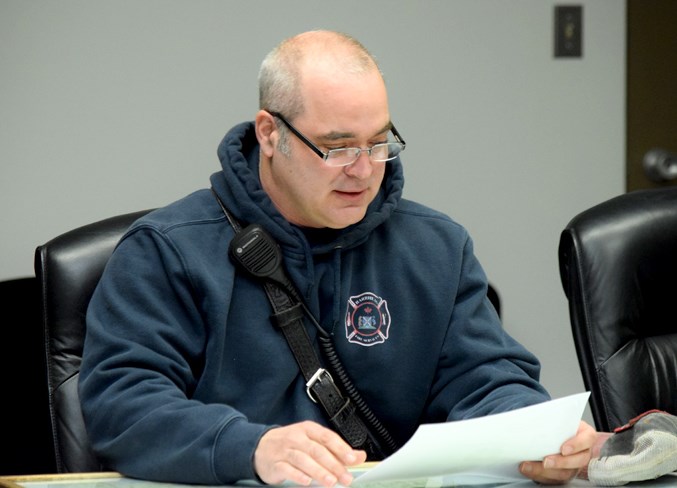If it seems like in 2018 you heard less fire department sirens, you would be right.
Last year, the Barrhead Regional Fire Services (BRFS) responded to 290 calls, a considerable decrease from the 385 calls responded to in 2017.
Speaking to County of Barrhead councillors on Feb. 19, BRFS chief Gary Hove attributed the difference to a change in the way they respond to medical response calls.
Under the old system, medical calls were classified A, B, C, or D, with A being the least severe and D being urgent.
Under the new protocol, the fire department no longer responds to the majority of A, B, and C calls, in which they were limited in what they could really do.
“That, along with a earlier, wetter spring and fall, reduced the number of wildland fires we had to respond to by quite a bit in 2017,” he said.
In 2018, BRFS responded to 160 calls specifically within the county. A total of 41 calls were ambulance assists or medical first responses, followed by alarm ringing investigations, fire responses and motor vehicle at 35, 26 and 25 respectively.
There were also 16 calls related to wildland fires, eight miscellaneous calls, four hazardous materials cleanup calls, three rescue calls and two gas leak checks.
Although fire response was not at the top of the list in terms of call volume, it took up the most time at 85.3 hours.
Hove said this is for two reasons, the first being it takes more firefighters to battle a fire.
The second factor is the distances and travel involved getting to the scene.
The top two BRFS responses in 2018 for the Town of Barrhead mirrored the county, with 64 ambulance assists within the town and 40 alarm investigations at the top of the list.
There were also five call-outs for wildland fires, two for gas leak checks and two calls for mutual aid from neighbouring fire departments.
Ambulance assist and alarm investigation accounted for the largest bulk of firefighters’ time at 45.9 and 20.3 hours respectively.
“This is because of the much shorter distances involved in responding to calls in the town,” Hove said.
Reeve Doug Drozd asked if firefighters responding to a motor vehicle accident on a numbered highway would still show up in the BRFS statistics.
Hove said yes, but in the majority of those cases, the county would not be billed for the call as highways are a provincial responsibility. As such, the county would bill Alberta Transportation directly.
Drozd then asked about staffing levels. Currently, BRFS has 28 members after recently accepting five new recruits.
“In February we started our latest level 1 firefighter course [to receive their National Fire Protection Association (NFPA) 10-01 certification - the professional firefighting standard],” Hove said, noting 12 of their newer members taking the course.
“Also, a number of our members completed the NFPA [National Fire Protection Association] 472 Hazardous Materials Awareness course and will be starting a level one fire instructor course in the near future.”
Drozd asked if high school students could join the department, noting that a number of schools offer a dual-credit firefighting course where students can get a jumpstart on getting their firefighter accreditation and receive high school and college graduation credits.
“Right now, no,” Hove replied. “To join our department you need to be 18 because we don’t want to expose people who are underage to certain risks.
“For those who are 18 and in high school, we did look at trying to set something up with NorQuest College two years ago, but not enough students were interested. [Barrhead Composite High School] offers quite a bit in terms of RAP [registered apprenticeship programs] so there is a lot of competition.”


